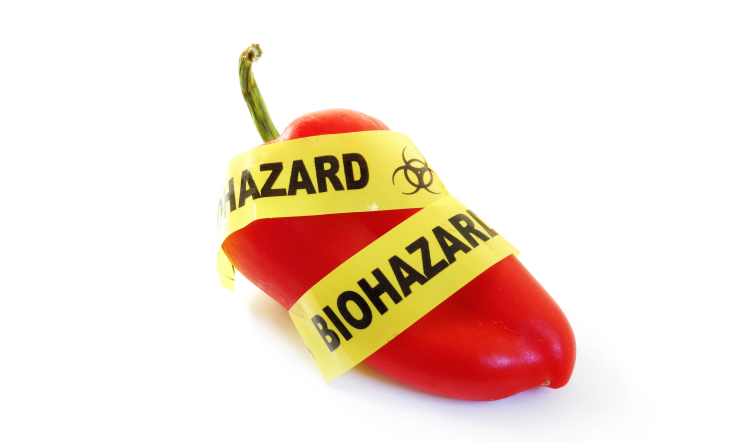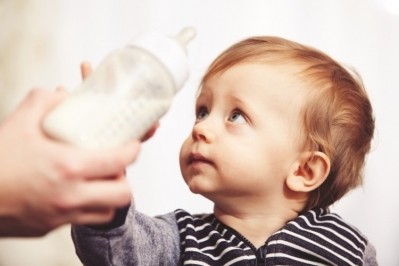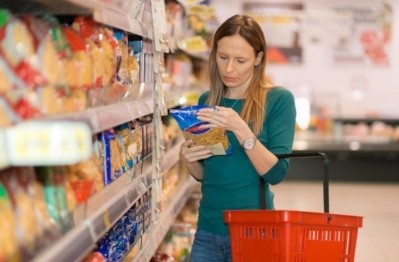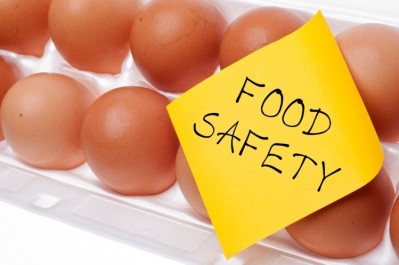In-depth: food safety
Rise of the recall

The UK can rightfully lay claim to having one of the safest food systems in the world – but recent data could be interpreted as telling a different story.
In February, law firm RPC’s analysis showed that recalls of unsafe food products in the UK jumped by 40% from 145 to 203 in the year to 31 October 2018.
More up-to-date figures from the Food Standards Agency (FSA) reinforce the upwards trend. In total, there was a 36% increase in allergy and food alerts in England, Wales and Northern Ireland in the year ending 31 March 2019, with allergy alerts rising 28% to 118 and food alerts up 52% to 73.
The rise in UK recalls is indicative of a global trend. Q1 2019 food and drink recalls rose by 7.1% to 1,041, the third-largest quarter in the history of RASFF (the EU’s Rapid Alert System for Food and Feed), according to Stericycle Expert Solutions’ quarterly index.
So, what’s driving the increase? Should industry, and consumers, be concerned? And how can food manufacturers reduce the risk of a recall and minimise the damage caused?
The FSA is keen to point out that the current volume of food recalled only represents a tiny proportion of the millions of food products sold in the UK every day. Indeed, “there is no evidence to suggest that the level of food safety in the UK has decreased”, according to Philip Randles, the Agency’s head of incidents and resilience.
Food industry experts largely agree that the spike in recalls should not give cause for alarm. “There is an argument that, rather than seeing these events as evidence of growing industry problems, the increased visibility of recalls should be seen for what it is – an illustration of an industry that is on the right track towards keeping the global food supply safe,” says Lloyd’s Register food technical manager Erasmo Salazar.
Better technology
Salazar claims there are more recalls because the industry has better technology and is able to trace products, better detection of health risks (for example, through whole genome sequencing on pathogens), greater regulatory oversight, and because there is more food production in general.
Yet, despite the food chain arguably being the safest it has ever been, in certain areas challenges persist in ensuring the product that arrives on-shelf is exactly as it should be.
“When we look at some of the recalls, we’re still seeing a lot of issues with labelling mistakes – either the wrong language is used or not emphasised, or allergens are missing,” says Reading Scientific Services (RSSL) food safety and quality consultant Barbara Hirst. “We also see a lot of issues with cross-packing – making the right product, but putting it in the wrong packet.”
Although food safety regulation has remained unchanged since 2002, Nick McMahon, partner at law firm RPC, points out that stricter labelling requirements, introduced in 2014 under the EU’s food information to consumers regulation, are likely to have played some role in the rise in recalls.
He notes that recent high-profile allergy-related deaths have resulted in increased public awareness of food safety and a consequent tendency for businesses to adopt a “safety-first approach” to food recalls. “Part of that may be erring on the side of caution and recalling products that may not be a major problem because businesses simply aren’t taking the risk,” he says.
The market for free-from foods continues to boom, presenting more opportunities for manufacture or labelling errors. Rick Sanderson, managing director of consultancy firm Gate to Plate Compliance and fellow of the Institute of Food Science & Technology (IFST), says: “The probabilities of cross-contamination are much higher in modern food manufacturing environments, given the nature of diverse ingredient decks and manufacturing processes, so caution is to be advised.”
Recent deaths
Recent deaths, including that of 15-year-old Natasha Ednan-Laperouse, who died after eating a sandwich from Pret A Manger containing sesame seeds, have been followed by the FSA consulting on new guidance on food traceability, withdrawals and recalls. Although it hasn’t introduced new mandatory requirements, it has set out best practice advice for incidents.
Manufacturers would be well advised to take heed of the FSA’s advice. RPC highlights that the costs to a business of recalls are significant and can include legal fees, the collection, transport and destruction of products, advertising and communications.
Aside from the direct costs of a recall, there is also the financial impact of delayed orders and inventory losses to consider, says Chris Johnson, managing director of food industry bearings supplier SMB Bearings. “One of the costs that is often overlooked is the price of correcting what caused the product recall in the first place,” he says.
“For instance, should a batch of products be recalled due to contamination risks from incorrect bearing lubrication, the facility would need to complete an assessment of every bearing used on-site. Not only is this time-consuming but, should this lead to other instances of potential contamination being identified, it would create a maintenance backlog for the plant manager.”
Poorly managed recalls also run the risk of a loss of reputation and lower customer loyalty, although this is far from an inevitability. Sanderson says that dealing swiftly and correctly with a recall, compensating consumers and managing PR well mean “consumer trust in the wider brand can be rebuilt or even maintained”.
In practice, this involves having well-rehearsed systems in place to respond to any incidents. “It starts with a really robust analysis process, including a good risk assessment to identify all the risks [the business] has right along the supply chain, through the manufacturing process to packing,” says Hirst at RSSL.
“For each of the risks identified, they need to make sure they can control them as best they can. There might be several controls attached to just one risk and each of those controls has to be validated as to whether they are effective.”
Best practice in dealing with food safety incidents
New Food Standards Agency guidance includes the following:
- Each segment of the supply chain should be able to quickly trace all the foods received and dispatched one step forward and one step back.
- As a minimum, food businesses should keep traceability records for pre-packed foods for the shelf-life of the food plus 12 months.
- Businesses that initiate a food withdrawal or recall should check that the information has been received by business customers and action is being taken to withdraw or recall the food.
- Team members should be appropriately trained in dealing with food safety incidents.
- Businesses should review a food withdrawal or recall plan and its procedures on an annual basis. This could include a mock exercise.
Detailed arrangements for communicating the incident are also important, adds RPC’s McMahon. “It’s about having a number to ring if people are concerned. What is the essential message going to be? Who is it going to be delivered to? What would your message to the media be? What would it be to the public and to the regulator? And what are your arrangements for risk-assessing a product if something has gone wrong?” he asks.
“These are all things that businesses are strongly encouraged to build into their corporate governance, so when something does go wrong, they won’t be making things up on the hoof.”
Hirst warns that, where allergens are involved, some of the bigger issues can get overlooked as so much attention is given to allergen cross-contamination. “For example, we know packaging issues are behind a lot of the recalls, so making sure you’ve managed the risks associated with cross-packing is a key area,” she says. “When I talk about validation of packaging controls, this is not analytical testing, this is physical validation and is not as well done as it could be.”
Machinery contamination
When it comes to food alerts, contamination from process machinery and the increasing complexity of consumer products are possible drivers of the recent increase. One of the key sources of contamination is the machinery the product is prepared on, according to David Oliver, food and beverage industry manager at SKF, which has patents pending on a relubrication-free bearing unit.
“Existing deep cleaning processes have their limitations,” says Oliver. Following tests in conjunction with the Research Institute of Sciences and Engineering in Sweden, SKF has found that, even after hygienic cleaning, the level of bacteria can remain high on machinery while, depending on the cleaning technique used, bacteria can spread some distance from the food equipment being cleaned in the washdown process.
To manage these effectively, some experts believe food businesses should learn from risk management practices employed in other sectors. Dr Vince Shiers, managing director of RQA Group, suggests applying the ‘Never Events’ principle, based on the patient management approach used in the NHS, which defines events that are preventable, can cause serious harm, have occurred in the past and risk occurring again and whose occurrence is easily recognised and clearly defined.
The principle rests on the argument that incidents cannot simply be blamed on an individual, but on the system within which that individual operates, meaning it is necessary to look at what is wrong in the system to prevent those incidents recurring.
The latest technology is also being put to work in reducing the risk of systemic mistakes. Siemens reports that IoT (Internet of Things) software is increasingly requested by customers in the food and drink industry, with cloud-based systems allowing businesses to monitor their processes and create alarms when process conditions are not within the specified tolerances.
Yet, as much as the industry is embracing new technology, Salazar at Lloyd’s Register believes the solution still lies with people. “Production sites need to have the right people, with the experience and training to recognise potential hazards and put certified processes in place that are guided by best practice and easy to follow.
“It takes just one missing link in the learning – or a momentary lack of attention – to set off a chain reaction, even for companies whose incoming food supply is protected by a robust sampling regime.”
In production settings where allergens pose a specific risk, manufacturers are increasingly producing foods containing allergens at separate sites to minimise the opportunity for cross-contamination, according to Sue Springett, commercial manager at Teknomek.
“Segregation procedures are incredibly rigorous at any factory where there is any risk of cross-contamination. This begins at the changeover room – or even before, a significant number of steps prior to production,” Springett adds.
Meanwhile, in May, the FSA board backed mandatory full ingredients labelling for packaged food served outside the home – a verdict set to have major implications for foodservice businesses should the advice be adopted by ministers. It could also have implications for the wider industry by triggering “even more food recalls in the future”, McMahon suggests.
In this new normal, where food alerts become a regular occurrence, the onus will be on businesses to ensure a recall remains a small drama, rather than a full-blown crisis.
How to deal with a food recall
Food and allergy recalls can be triggered by all kinds of different incidents. In its analysis, law firm RPC discovered examples of gluten-free burgers that included undeclared traces of gluten; vegetable spring rolls including undeclared seafood; and stracciatella ice cream that included undeclared nuts.
Non allergy-related food and drink recalls, meanwhile, included marshmallow candy having a possible mice infestation and sushi containing glass fragments.
When handled quickly and effectively, a food recall need not be a disaster for a business. Rick Sanderson, managing director of gate-to-plate compliance at the Institute of Food Science & Technology cites the example of Cow & Gate, which recently had to recall a batch of baby food from supermarkets after jars were found to contain pieces of a rubber glove.
Cow & Gate acted immediately, saying that although the product did not pose a health risk, it was recalling the product as it did not meet its usual high quality standards. It apologised to customers and reassured them that this was an isolated incident.
Sanderson says the actions of the supplier followed the golden rules of admitting the issue, isolating it if possible, communicating swiftly and well, dealing with the recall, and reassuring customers about the wider brand. The outcome, he suggests, is that there have been “no subsequent issues or lasting brand damage”.



















